

CELEBRATING BRITISH CRAFT
Our latest launch centres around the Tulipière - a sculptural vessel with a rich history, reimagined by two talented artists, John Wheeldon and Ali Hewson.
At Bamford, we're passionate about sharing skills, knowledge and preserving heritage crafts. This philosophy is rooted in our founder's desire to nurture talent and deep respect for natural materials, artistry and time honoured traditions. Through an ongoing series of collaborations, we hope to celebrate and safeguard traditional craftsmanship for future generations, while bringing to market extraordinary homeware pieces.
This year, we embark on a journey to celebrate British craft in all its forms, honouring artisanal work that resonates with Carole Bamford’s love of heritage and unique handcraft. It is a celebration of the hands, history and skills that shape every object.
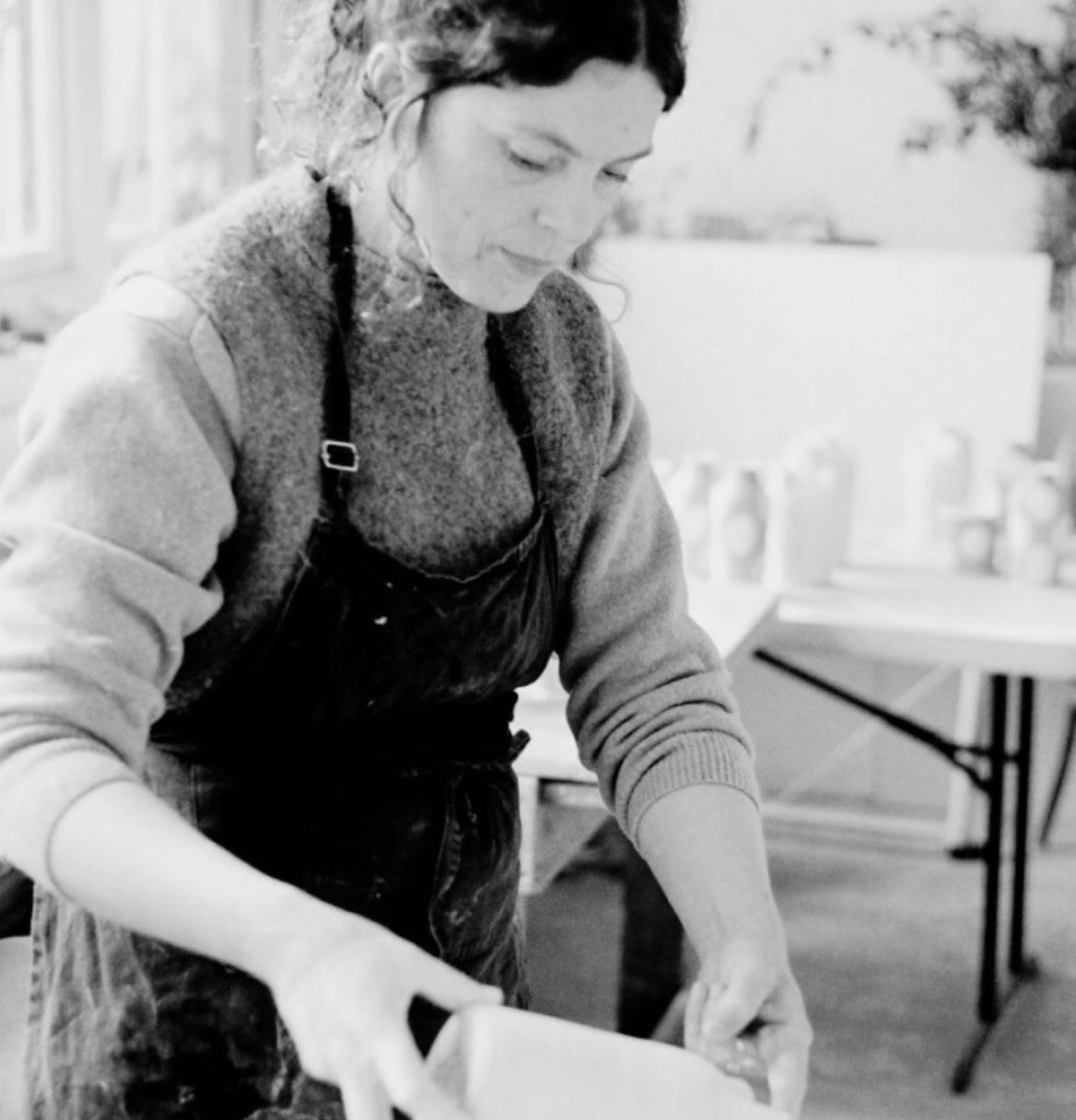

ALI HEWSON
Ali Hewson is a ceramic artist living and working in East Anglia. Drawing inspiration from 17th-century slipware and London delftware, she creates each piece - from ceramic tableware to vessels - through a process of experimentation, balancing historical references with functionality.
JOHN WHEELDON
For over 55 years, John has explored the versatility of ceramics. Working from his studio in the Derbyshire Dales, he draws inspiration from the region’s rich archaeological history. A lifelong collector of pottery fragments unearthed from riverbanks and fields, he incorporates these discoveries into his work, using them to inform his glazes and surface treatments.
Photo credit: Chris Webb Photography
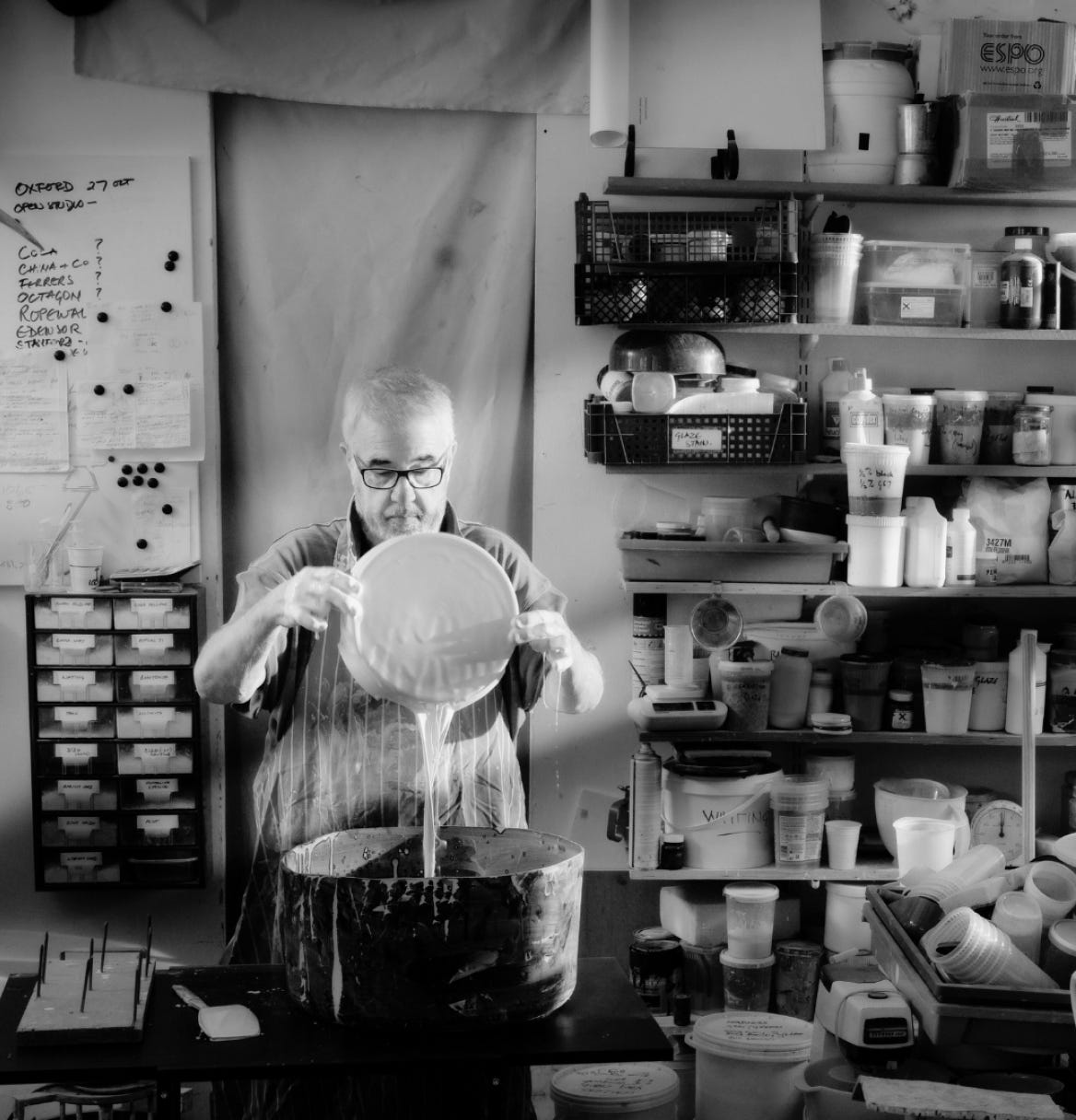

Here, we dive into both Ali and John’s inspiration, learning more about their creative process and the making of these unique collaboration pieces.
Could you tell us about your journey into ceramics?
(Ali): I first got into ceramics through evening classes while doing my foundation at Camberwell College of Arts. Since the ceramics department had shut down at the university, I had to look elsewhere, so I went all over London - Morley College, Peckham Adult Education, KCC - taking a couple of classes a week. I loved it from the start and kept going throughout my BA, always finding extra classes. Learning from different teachers with a mix of specialisms was so valuable in those early days. After graduating, I moved to Norfolk, where I was finally able to set up my own studio. Having that space allowed me to experiment and expand what I could make. I spent a long time building up my practice and brand, juggling multiple jobs alongside my studio work, before finally going full-time about four years ago.
(John): My journey into ceramics began after leaving school when I enrolled in an art foundation course. We explored a wide range of disciplines, one of which was ceramics. The idea of taking a soft, malleable material - essentially mud - and transforming it into a durable, functional object through firing was fascinating. The late '60s and '70s were an exciting time to start out. We were fortunate to learn from a remarkable generation of established potters, including Michael Cardew, David Leach, Mick Casson, Lucie Rie, and Hans Coper. Their work was a huge inspiration. I was lucky to receive a Craft Council grant, which allowed me to buy a gas kiln, a wheel, and materials. I found a wonderful workspace at Sudbury Hall, a National Trust property in Derbyshire. From there, I made my first pots, loaded them into the car, and drove to Devon and Cornwall, offering them to small independent galleries.
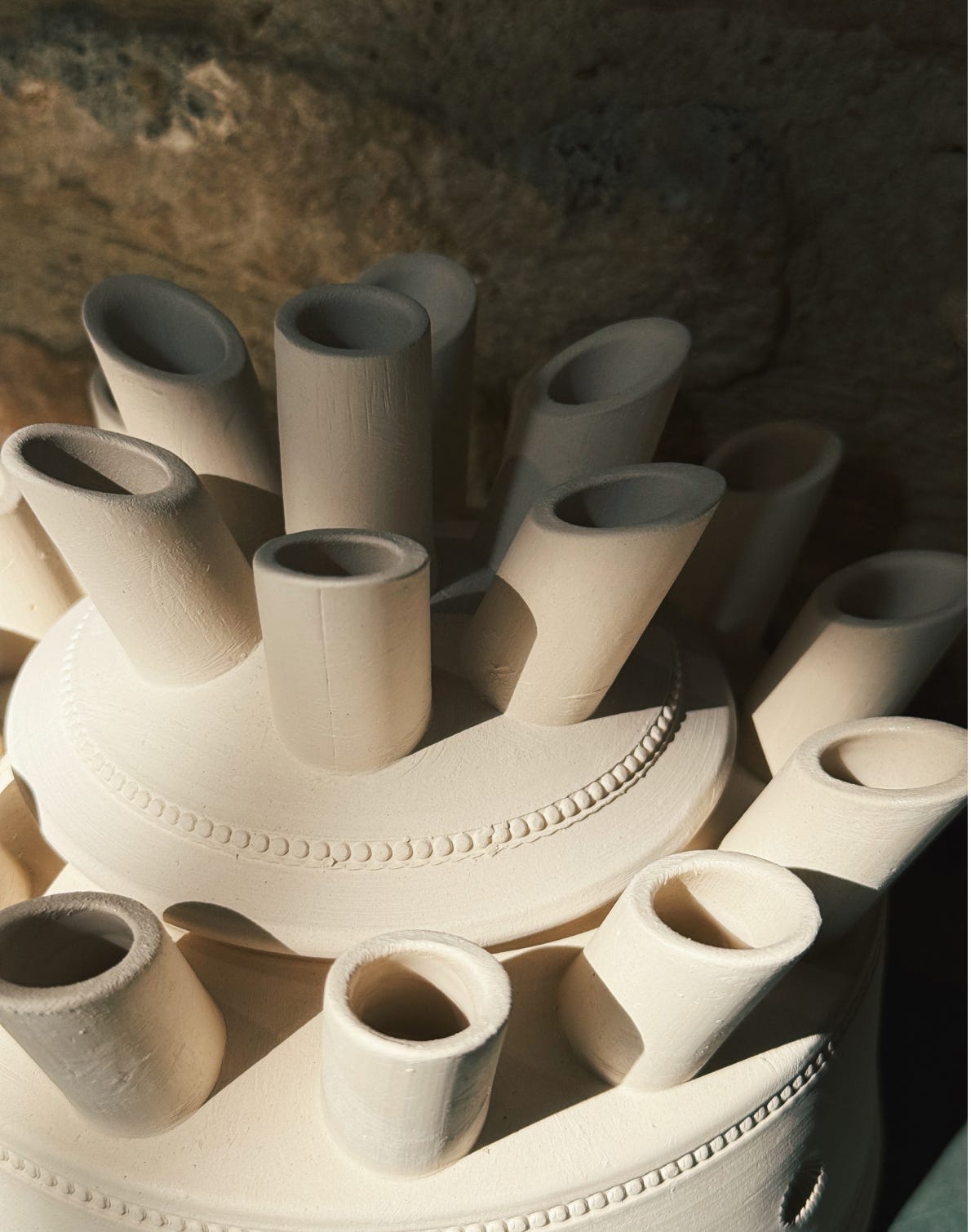

John Wheeldon
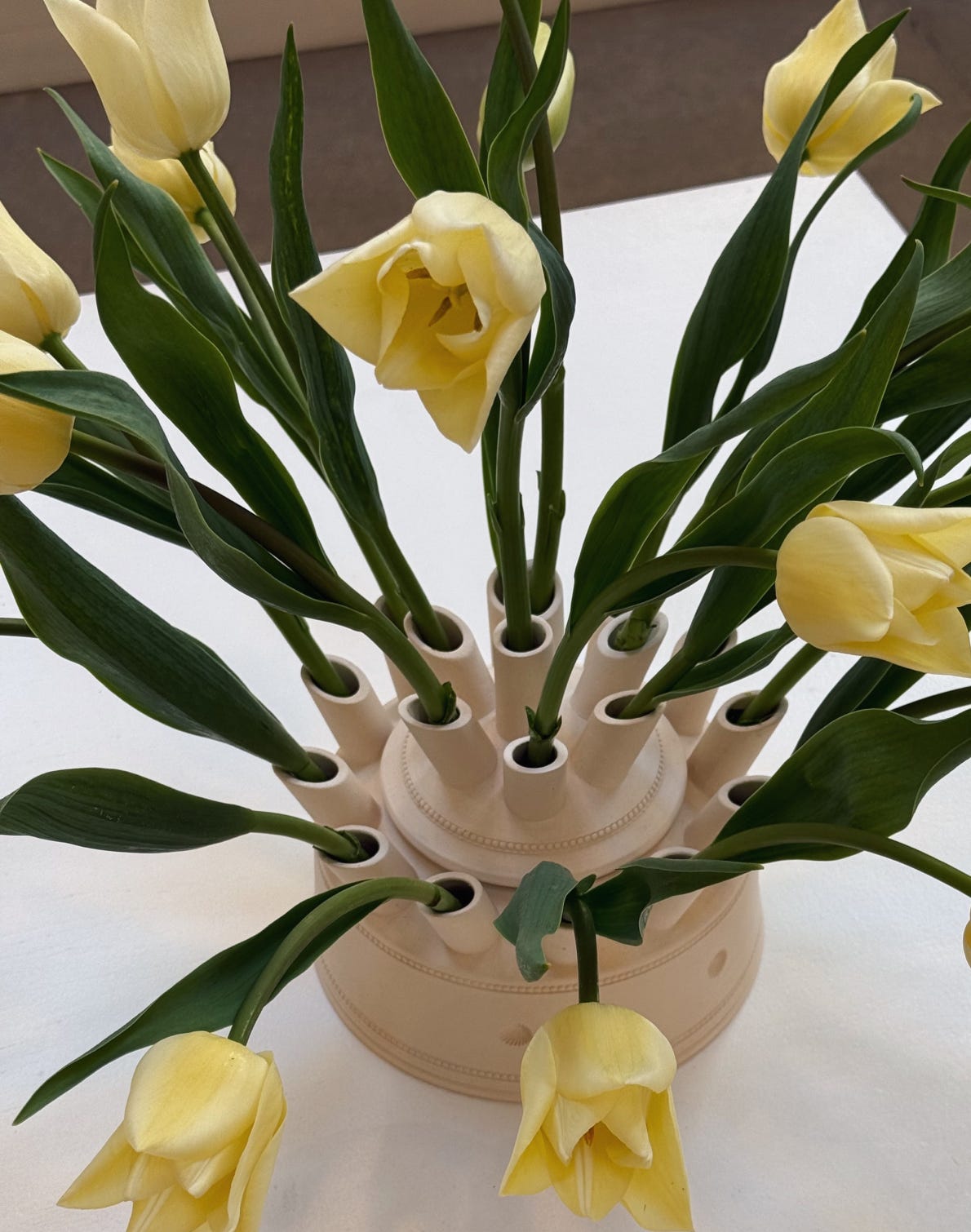

Could you tell us a bit more about your making process?
(J): My making cycle typically spans several stages: one day for throwing, another for turning, followed by a day dedicated to building and decorating. After that, the pieces dry until they're ready for firing and glazing. My favourite parts of the process are turning, decorating, and experimenting with new forms and glazes - though the latter can be quite frustrating at times, especially when things don’t go as planned. That said, the unexpected results can often be the most exciting!
(A): I often make things as a way of understanding how they might have been made - almost like experimental archaeology. Mudlarking* and studying broken shards help me analyse details like the thickness of a slip*, the shape of a handle, or the weight of a piece. I combine this hands-on research with museum visits and book references. I like to take inspiration from historical forms but adapt them to suit my own making process and their intended function. For example, my candlesticks were originally inspired by 17th-century Delft designs, which were themselves modelled on older metal ones. I first made them in three separate parts, then as three slip cast pieces, and over time, they evolved into their current form - thrown in one piece, with a more fluid shape and a weightier presence.
* Mudlarking: the activity of searching the mud near rivers at low tide, particularly the Thames in London, for items of historical or cultural value.
* Slip: a liquid mixture of clay and water, used for joining pieces together, decorating, and casting.
Tulipières are quite an unusual form - what inspired you to create them?
(J): I began developing tulipières during the pandemic, when I had the time and space to explore new ideas. While researching pots designed for displaying cut flowers, I came across the ornate tulipières made in the Netherlands during the 18th and 19th centuries. I was struck by how unique they were - something I had never encountered before. Intrigued, I delved deeper, and over time, the tulipière has become one of my signature forms.
(A): I was really drawn to the way tulipières combine multiple wheel-thrown parts that are joined together - it was a challenge to figure out, which I enjoyed. They’ve evolved a lot over the years, becoming more functional, streamlined, and refined. From the very first one I made, I noticed that they genuinely helped cut flowers last longer, which motivated me to keep developing the design beyond just historical research and experimentation. I love how the spacing of the spouts around the central opening allows for playful arrangements, whether with simple garden or wild cuttings, or elements from a bunch of bought flowers. For this collaboration, introducing the green was a way to bring an element of the drawn line into the pieces while also highlighting a fresh, spring green that complements the tulips.
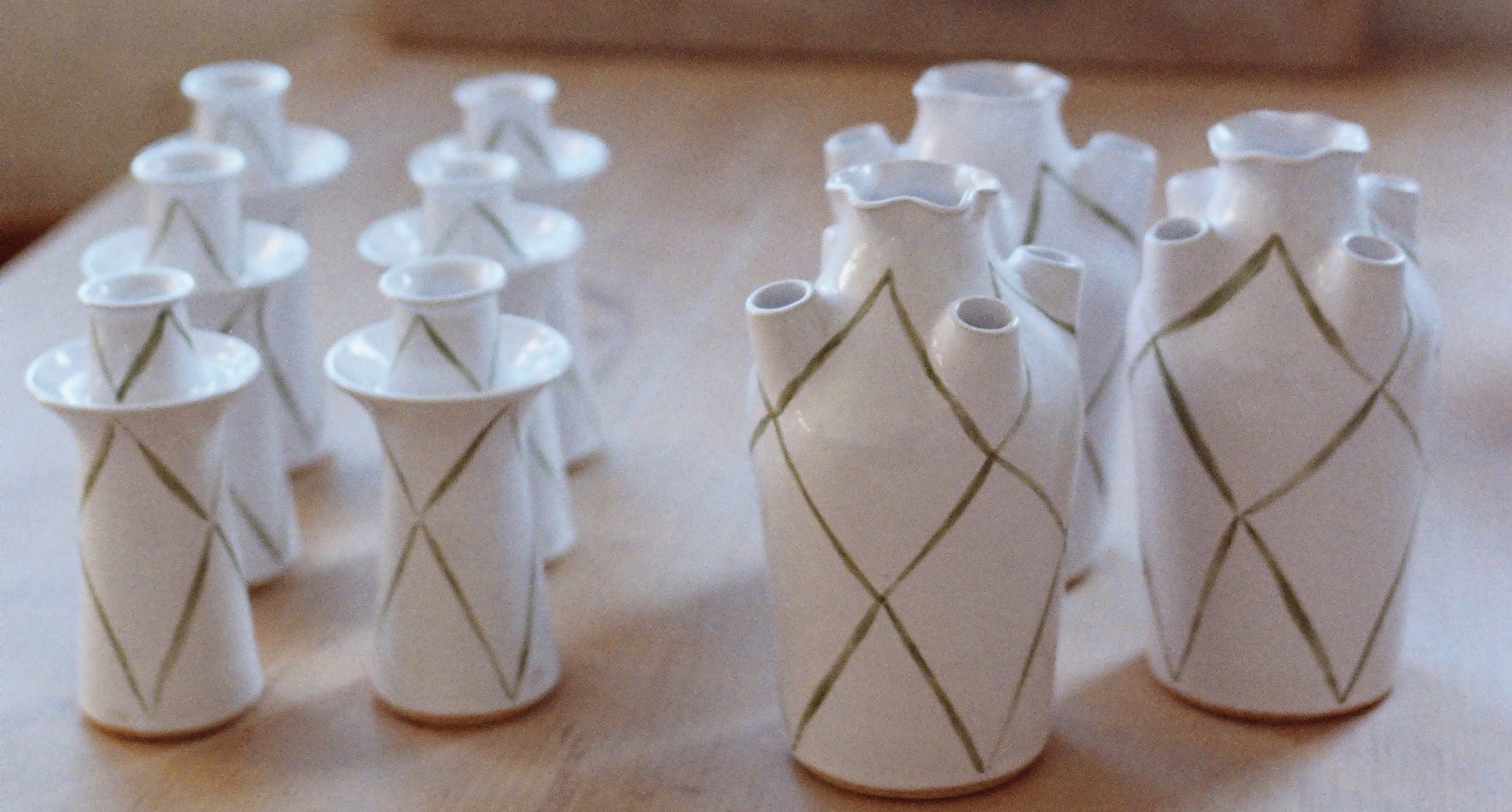

Ali Hewson
Did you face any challenges in designing and making these collaboration pieces?
(A): So many! When I used to make my candlesticks in three parts, the pieces would warp constantly because they required a lot of handling to assemble - and the less you touch clay, the less it warps. I then moved on to slip casting, but those often cracked. When I first started throwing them in one piece, they kept cracking until I realized I needed to add holes in the base. I did some serious damage to the inside of my kiln a few years ago with exploding candlesticks! Now, I let them dry for about a month, add air holes, and compress the bases with a tool. I still get the occasional crack, but overall, it’s much improved!
(J): Yes, there were two main challenges. The cold, damp weather made it difficult for the pieces to dry properly, and the matte glaze proved tricky to perfect. The glaze still isn’t behaving quite as I’d like, so for now, the pieces have a bisque exterior. Refining the glaze will take time, but it’s an ongoing process.
Does sustainability play a role in your work, whether in materials, firing techniques, or studio practice?
(A): Absolutely. I’ve consciously refined my studio down to a small selection of materials and just one type of clay, allowing me to be as efficient as possible and recycle as much dust and clay water as I can. I also mostly work to order, which helps reduce unnecessary production - everything I make already has a home, rather than creating excess stock. I’m very mindful when it comes to firing tests, too. If something goes in the kiln, it’s going to exist for thousands of years, even if only as rubble. I’m always aware that I’m making physical, lasting objects, so I try to be intentional about what I design, fire, and put out into the world - but like all of us, I know there’s always more to learn and improve on.
What’s your studio environment like? Do you have any rituals or routines when creating?
(A): My studio is a beautiful, light-filled space in an old factory. I’ve been in the building for about eight years now, and it feels so familiar and comforting - it’s a place I feel incredibly lucky to spend most of my days. It can get a bit chaotic at times, but I make sure to get outside every day. I also listen to a lot of music and podcasts while I work. Somehow, familiar music helps me concentrate, so I end up playing an embarrassingly large number of Bob Dylan albums on repeat!
(J): My studio is a good size, well-lit, but admittedly a bit cluttered – with shelves full of finished pots and glaze materials. That said, I always know where everything is! As for rituals, my workday wouldn’t be complete without my espresso machine and a steady stream of Radio 4 or 5.


Ali Hewson
Discover Ali and John's exclusive Ceramic pieces, now available to purchase in The Bamford Barn and our South Audley store.
For sales enquiries:
Bamford Barn: bamfordbarn@bamford.co.uk 01608 692861
South Audley: southaudley@bamford.co.uk 020 7499 7994
